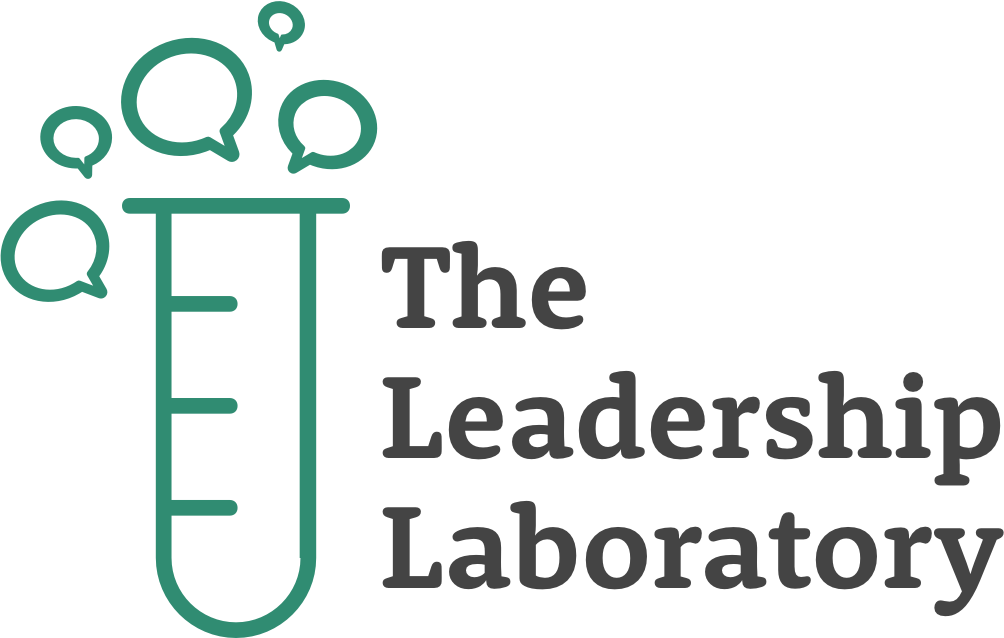Written by Jacob Goldstein — Executive Director
Interested in workshops on this topic for you and your team? Visit the Leadership + Management page for recommended interactive learning experiences from The Leadership Laboratory for emerging and established leaders in your organization.
As organizations take the important steps to encourage their employees to proactively prevent the spread of Coronavirus (COVID-19), we are seeing some excellent examples of change management. Teams are putting together business continuity plans to keep workflow in place, departments are testing out remote work policies for their groups, and businesses are leveraging well-crafted communication to keep internal and external constituents informed and safe.
At The Leadership Laboratory, in our workshop on “Leading through Ambiguity” we focus on the difference between Change MANGEMENT and Change LEADERSHIP. In navigating your role as a leader during Coronavirus, it’s crucial to understand the distinction. As leaders, many of us have had time and experience to gain skills to successfully navigate and manage through change; think of Change Management as the step-by-step approach we take to implement and adapt to new situations. It’s the action or implementation plan that we use to accomplish our goal. As leaders, and especially now, we need to place an extra emphasis on Change Leadership to support individuals with their own individual and emotional responses to the change at hand.

Here, we place a distinction between CHANGE and TRANSITION. The CHANGE is the external event – a change is something that happens to us. The TRANSITION is the internal response – a transition might look different for each person depending on their own thoughts, experiences, and needs. Think about turning off a light switch in a room. The CHANGE is the event, or actually turning off the lights. It’s something that happens to and around us. The TRANSITION is the internal response to the change. Individuals are likely to react differently to the transition – people afraid of the dark will have a completely different reaction than individuals getting ready to go to bed.

Through his published research in Managing Transitions, William Bridges discusses the three phases of transition: The Ending, Losing, Letting Go Phase, The Neutral Zone, and The New Beginning. In the next few weeks, teams and organizations will be enacting change management protocols in response to Coronavirus. As leaders, we must leverage these phases of transition to support our people.
During this time of uncertainty, we encourage you to focus on Phase I: The Ending, Losing, Letting Go phase. In this phase, we must acknowledge that we’re asking people to give up and let go of how their world once was. Many of us are used to commuting to an office, grabbing snacks with colleagues in the breakroom, and having workshops & team meetings in-person. While we may understand the necessity for our temporary change, as a part of the transition process many may still pine for their world as it was. And while we know that these changes are short-term, as leaders we must do our part to support our people through this process.
In looking at Bridges’ research on this phase of transition, here are several key actions we can take as leaders to successfully lead our teams through COVID-19:
1. Define what is ending, and what will remain the same. When navigating this phase of transition, our emotional reactions can sometimes get the best of us. It’s easy to catastrophize and feel that our worlds are coming to an end. As leaders, we must clearly define what is CHANGING and what is STAYING THE SAME. For example, we will be changing our work environment to being 100% virtual for the next two weeks, but we will be keeping all of our meetings and daily touch points. To successfully navigate the transition, clearly lay out what will change, and what will not.
2. Let people take a piece of “the old way” with them. What are the parts of your team and office culture that you love and want to keep? Can you incorporate a 2pm group snack break, or virtual-dance party? Where can you find opportunities to continue building your community via virtual learning sessions to replace in-person leadership development? Think through the specific elements of what make your team culture so special, and find ways to integrate it into the (temporary) new normal.
3. Treat the past with respect, and create space for emotional responses. Resist the urge to encourage your team members to “move on” or “accept the situation”, and let people emotionally lament the loss they are navigating with the change. While we know this is short term, encourage your team members to share what upsets, excites, frustrates, or scares them. From small (sadness about missing a concert or March Madness game), to medium (concerns about hitting our revenue goals), to large (fear for public health and safety), create the space for your peers and direct reports to openly share their emotional responses and reactions to the situation.
4. Share the vision for the future, and reiterate the “WHY”. During times of ambiguity, the most helpful thing we can do is to paint a picture of our vision for the future. While our formal future vision may still take a few extra weeks to shape up, the more we can communicate what we’re planning to enact, the easier it is to navigate this phase of transition. Share any specific dates or milestone markers that you can to let your team members know up-to-date information. While it may be obvious, continue to explicitly remind your team members about the WHY behind the change, and reinforce your role in supporting them through the transition.

At The Leadership Laboratory, we are navigating these transitions alongside you, and sending wishes for continued healthiness as you make the decisions that are right for your team and organization. Feel free to reach out for virtual learning, small-group in-person workshops, and one-on-one coaching to continue to develop your leadership & navigate COVID-19; we are happy to support however we can.
Talk soon,
Jacob Goldstein & The Leadership Laboratory team

